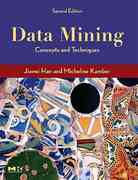The ranking cube was designed to support top- (k) (ranking) queries in relational database systems. However, ranking
Question:
The ranking cube was designed to support top- \(k\) (ranking) queries in relational database systems. However, ranking queries are also posed to data warehouses, where ranking is on multidimensional aggregates instead of on measures of base facts. For example, consider a product manager
who is analyzing a sales database that stores the nationwide sales history, organized by location and time. To make investment decisions, the manager may pose the following query: "What are the top-10 (state, year) cells having the largest total product sales?" He may further drill down and ask, "What are the top-10 (city, month) cells?" Suppose the system can perform such partial materialization to derive two types of materialized cuboids: a guiding cuboid and a supporting cuboid, where the former contains a number of guiding cells that provide concise, high-level data statistics to guide the ranking query processing, whereas the latter provides inverted indices for efficient online aggregation.
a. Derive an efficient method for computing such aggregate ranking cubes.
b. Extend your framework to handle more advanced measures. One such example could be as follows. Consider an organization donation database, where donors are grouped by "age," "income," and other attributes. Interesting questions include: "Which age and income groups have made the top-k average amount of donation (per donor)?" and "Which income group of donors has the largest standard deviation in the donation amount?"
Step by Step Answer:

Data Mining Concepts And Techniques
ISBN: 9780128117613
4th Edition
Authors: Jiawei Han, Jian Pei, Hanghang Tong





